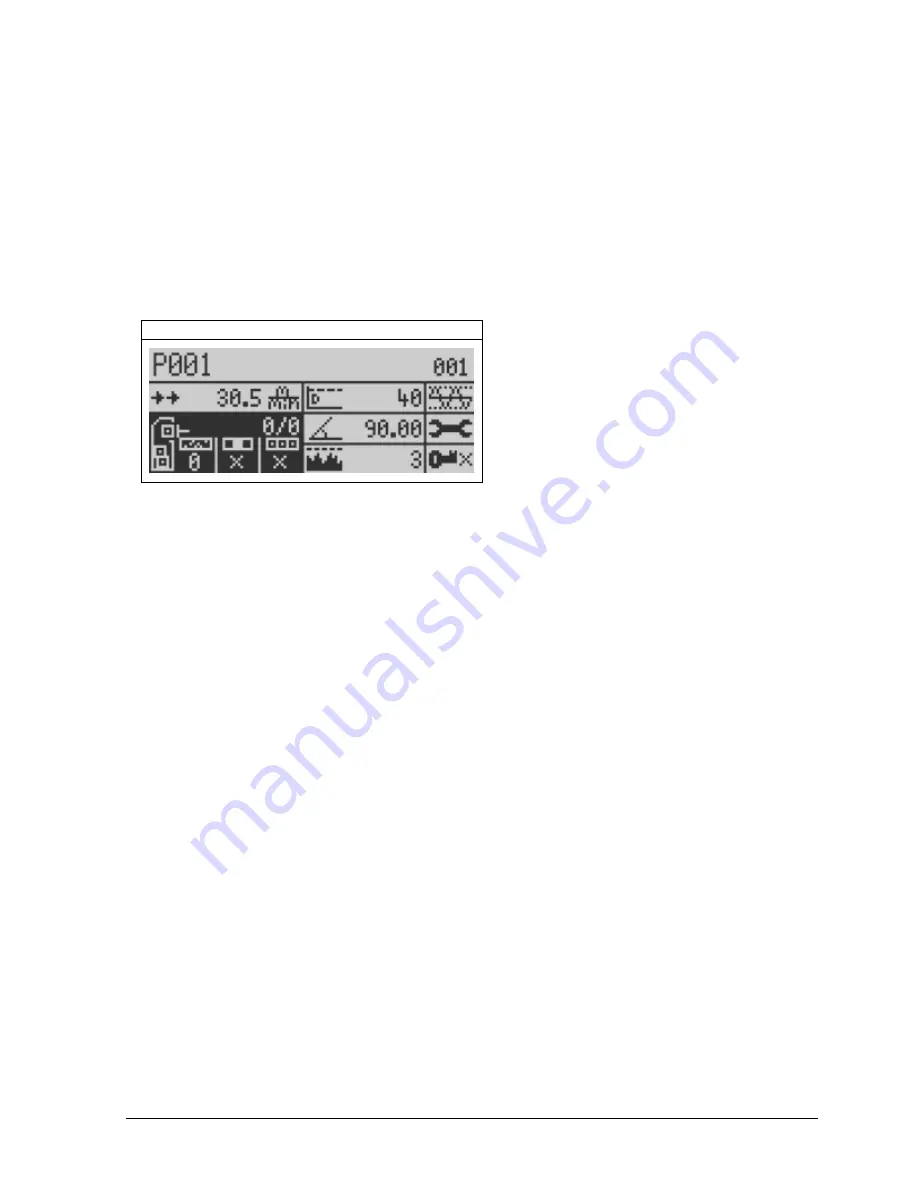
Thermo Scientific APEX User’s Guide
Page 43
Setting Reject Parameters
This section assumes that the reject device you are using to remove contaminated
products from the conveyor is already connected to the detector’s wiring board and
ready to go to work. If a reject device is not already connected to your detector, see the
“Mechanical Set-Up for Conveyor Applications” section on page 292.
In this manual—and in the detector’s menus—the main reject device is referred to as the
“Reject 1” device. Any secondary reject device is called the “Reject 2” device. The
following sections are written on the assumption that you currently have only one reject
device attached to your detector, a Reject-1 device. (For information about keying in
parameters for a Reject-2 device, see page 141.)
Reject Totals
Measurements You Will Need Before Starting
Imagine our packets of salted butter moving along the conveyor and the search head
suddenly detects a packet containing a metallic contaminant. For now, the contaminated
packet continues its journey out of the search head and along the conveyor. Around one
meter from the detector, however, the packet passes the main reject device and is
suddenly ejected from the conveyor into the reject bin. (One down, more to go!)
However, before you can begin keying in parameters to control your reject device, you
must have the following information ready.
•
The distance from the downstream edge of the search head to the center of your
reject device.
•
The duration of the signal needed (expressed in seconds and hundredths of a
second) to activate your reject device.
With this information in hand, you are now ready to key in the needed values. In our
salted butter example, we are going to use the following values.
•
Reject distance = 1.17 meters
•
Reject-signal duration = 2.02 seconds
Summary of Contents for APEX 100
Page 1: ...Thermo Scientific APEX Metal Detector User s Guide REC 4248 Rev K Part number 085381 English ...
Page 10: ...Page 10 Thermo Scientific APEX User s Guide ...
Page 78: ...Page 78 Thermo Scientific APEX User s Guide ...
Page 110: ...Page 110 Thermo Scientific APEX User s Guide ...
Page 258: ...Page 258 Thermo Scientific APEX User s Guide ...
Page 270: ...Page 270 Thermo Scientific APEX User s Guide ...
Page 282: ...Page 282 Thermo Scientific APEX User s Guide ...
Page 310: ...Page 310 Thermo Scientific APEX User s Guide ...
Page 319: ...Thermo Scientific APEX User s Guide Page 319 Appendix A Modbus Communications Card ...
Page 320: ...Page 320 Thermo Scientific APEX User s Guide ...
Page 324: ...Page 324 Thermo Scientific APEX User s Guide ...
Page 340: ...Page 340 Thermo Scientific APEX User s Guide ...
Page 367: ...Thermo Scientific APEX User s Guide Page 367 Appendix B IntelliTrack XR ...
Page 368: ...Page 368 Thermo Scientific APEX User s Guide ...
Page 402: ...Page 402 Thermo Scientific APEX User s Guide ...
Page 404: ...This page intentionally left blank ...
Page 414: ...This page intentionally left blank ...
Page 430: ......
Page 431: ......
Page 432: ......
Page 433: ......
Page 434: ......
Page 435: ......
Page 436: ......
Page 437: ......
Page 438: ......
Page 439: ......
Page 440: ......
Page 441: ......
Page 442: ......






























